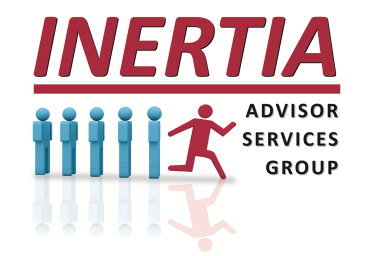If It's Not In Writing, It's Not A Plan......
In 2030, 1 in 5 Americans, including every Baby Boomer, will be over age 65, and this "Silver Tsunami" will significantly alter the delivery, cost, and availability of healthcare and Long-Term Care (LTC). As this Tsunami approaches, adequate planning for potential care needs becomes increasingly vital as Medicare and health insurance generally exclude LTC.
The client's election for a Self-Funding strategy to pay for future LTC needs, or their failure to make an election, reverting to the self-funding default, carries significant implications and risks and makes proper documentation a logical step. That step becomes an absolute necessity, given the importance of proper documentation across the financial services industry to ensure compliance, transparency, and protection for clients and advisors. For some perspective, here are numerous common examples of documents that must be signed in various advisory settings:
- Account Opening Documents include new account applications, client information forms, and identification verification documents, which establish the client's identity and suitability for certain financial products.
- Investment-Related Documents, such as investment policy statements (IPS), risk tolerance questionnaires, and advisory agreements, detail the client’s strategy, risk preferences, and engagement terms. Notably, while IPS documents are not required by regulation, they are widely adopted by fiduciaries to document investment intent and provide accountability, even when no product is purchased.
- Compliance and Regulatory Forms like Know Your Customer (KYC) and Anti-Money Laundering (AML) forms are essential for legal compliance, ensuring clients' backgrounds are vetted.
- Retirement Account and Insurance documents like insurance applications and beneficiary designations to secure a client's plans for the future.
- Trading and Brokerage Documents require agreements for margin accounts and options trading to highlight the risks and terms associated with specific trading activities.
- Disclosure and Consent Forms to ensure clients are aware of potential conflicts of interest and agree to the terms of service and privacy policies.
-
Tax Documents such as signed tax returns, engagement letters, and preparer authorization forms (e.g., Form 8879) are required for IRS compliance and professional standards.
-
Estate Planning Documents like Wills, Trusts, Durable Powers of Attorney, and Healthcare Surrogate forms must be executed, notarized, and witnessed to have any legal effect, especially during incapacity or at death.
- Medicare Enrollment Documents, including the initial enrollment application, Part B Election Form, and any IRMAA appeal documentation, must be completed, signed, and submitted to determine coverage eligibility, costs, and timing of benefits. Enrollment decisions have long-term implications and require formal acknowledgment.
These are not merely administrative documents; they are NECESSARY to protect all parties and ensure there is understanding and agreement around the terms for client engagement. This comprehensive approach prevents misunderstandings, manages risks, and establishes a solid legal foundation for all transactions.
The Mandate To Document Long-Term Care Planning Elections
Planning for or funding future LTC needs has significant financial, advisory, and intra-family implications, and treating this decision with the same level of importance as other consequential financial decisions should include formal documentation for….
Legal and Regulatory Compliance Documentation: A formal, signed agreement provides a clear legal record of the client's decision, ensuring compliance with relevant regulations and protecting the advisor and firm from potential disputes.
Client Protection: This is no different than a margin account, options trading agreements, or paperwork to become an accredited investor. Requiring the LTC Funding Acknowledgment ensures clients fully understand the financial risks and implications of their Self-Funding decision (or the default) when suitable options are ignored or recommendations are disregarded. This risk disclosure would reinforce informed consent with the client confirming and acknowledging the potential depletion of assets and the impact self-funding will have on the client, loved ones, and other financial planning concerns.
Risk Management: Formal documentation provides a tangible record of the client's informed choice, safeguarding both the client and the advisor in case of future disputes, and assigns responsibility by confirming a client's acceptance of the risks involved in self-funding, ensuring they understand the potential consequences.
Ethical and Professional Standards: The required formal agreement enhances transparency and holds the advisor and client accountable for the decision. It also standardizes the handling of significant financial decisions and aligns them with best practices throughout the advisory community.
Dispute Resolution: In the event of a dispute, a signed agreement provides clear evidence of the client's informed consent, decision, or continued indecision to facilitate a resolution.
Implementing the LTC Self-Funding Acknowledgment Agreement
To effectively implement this necessary documentation, the advisory community should standardize a formal document titled The LTC Self-Funding Acknowledgment Agreement, to include:
1) Detailed Explanation: A thorough explanation of the self-funding election is necessary, including quantifying the potential costs and assessing the various risks using a personalized, data-driven tool like the HALO Assessment from Lumiant.
2) Alternatives & Options: Details on discussions about alternative LTC funding options, rejected insurance-based options, or ignored advisory recommendations.
3) Risk Acknowledgment: A section for clients to acknowledge their understanding of the risks.
4) Signature and Date: The client's signature and date confirm their informed decision and the complete assumption of all future risks and responsibilities.
Proper documentation is foundational in the financial service industry to ensure all parties are protected and informed, and the choice (or default) of self-funding future LTC needs creates significant and numerous potential risks for advisors, firms, clients, and their loved ones. Yet, the advisory community somehow declines to see the basic need for accountability by memorializing and documenting healthcare imperatives. Only by requiring a formal, signed LTC Self-Funding Acknowledgment Agreement can the advisory community ensure clients make well-informed choices while protecting themselves and their firms from future disputes. This approach not only complies with legal and regulatory standards but also upholds the highest ethical standards of client care and professional practice.
20250804

